
How to Use SCT-013 Current Sensor: Examples, Pinouts, and Specs
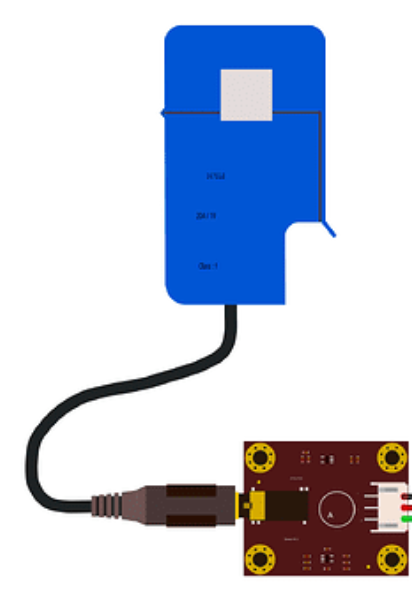
 Design with SCT-013 Current Sensor in Cirkit Designer
Design with SCT-013 Current Sensor in Cirkit DesignerIntroduction
The SCT-013 is a non-invasive current sensor designed to measure alternating current (AC) by clamping around a conductor. Manufactured by Arduino with the part ID Sen0211, this sensor outputs a voltage proportional to the current flowing through the conductor. It is widely used in energy monitoring systems, home automation, and industrial applications to track power consumption and optimize energy usage.
Explore Projects Built with SCT-013 Current Sensor
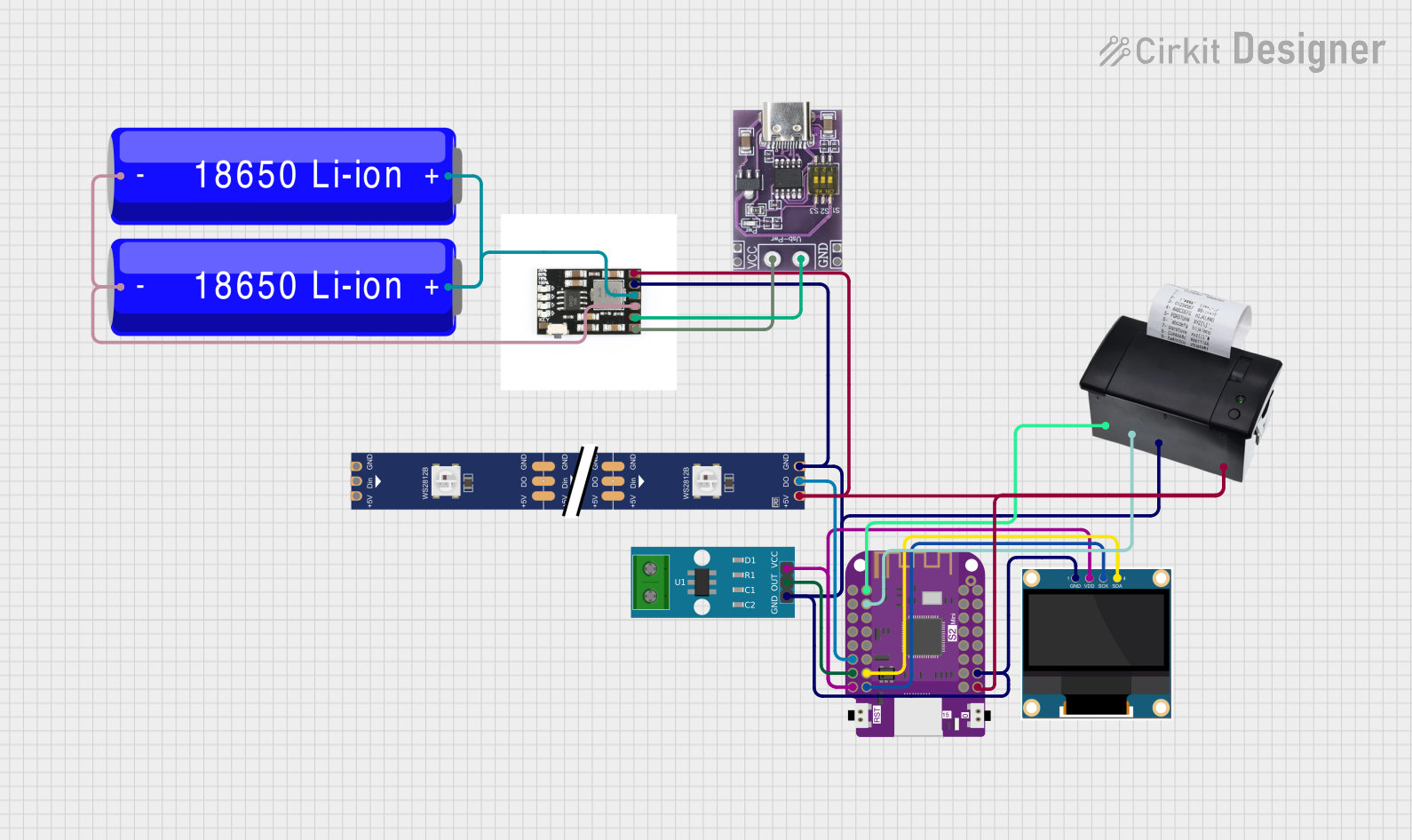
 Open Project in Cirkit Designer
Open Project in Cirkit Designer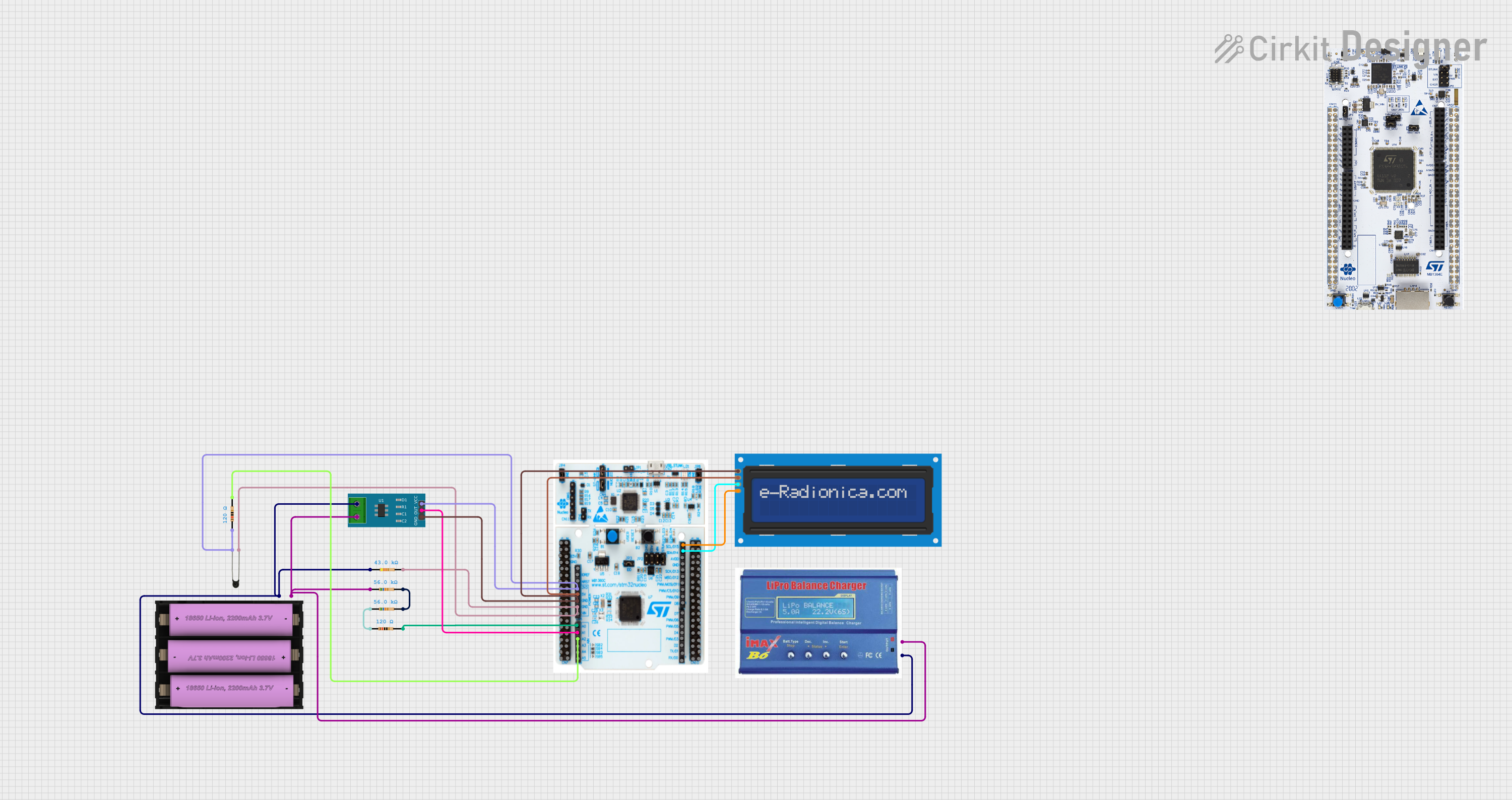
 Open Project in Cirkit Designer
Open Project in Cirkit Designer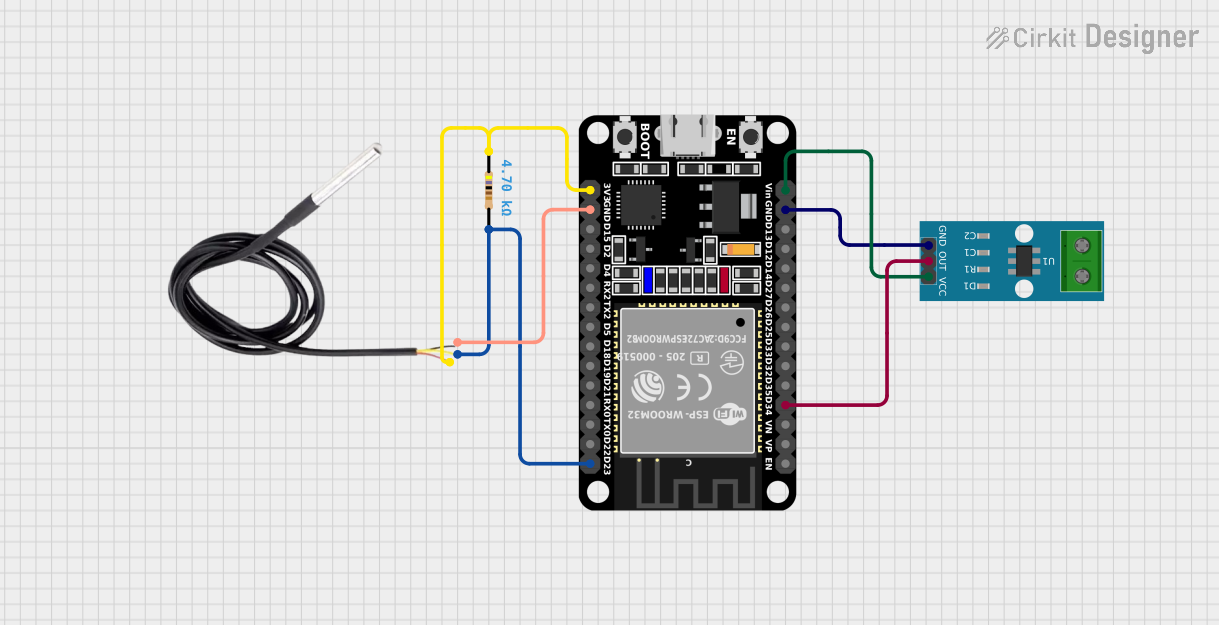
 Open Project in Cirkit Designer
Open Project in Cirkit Designer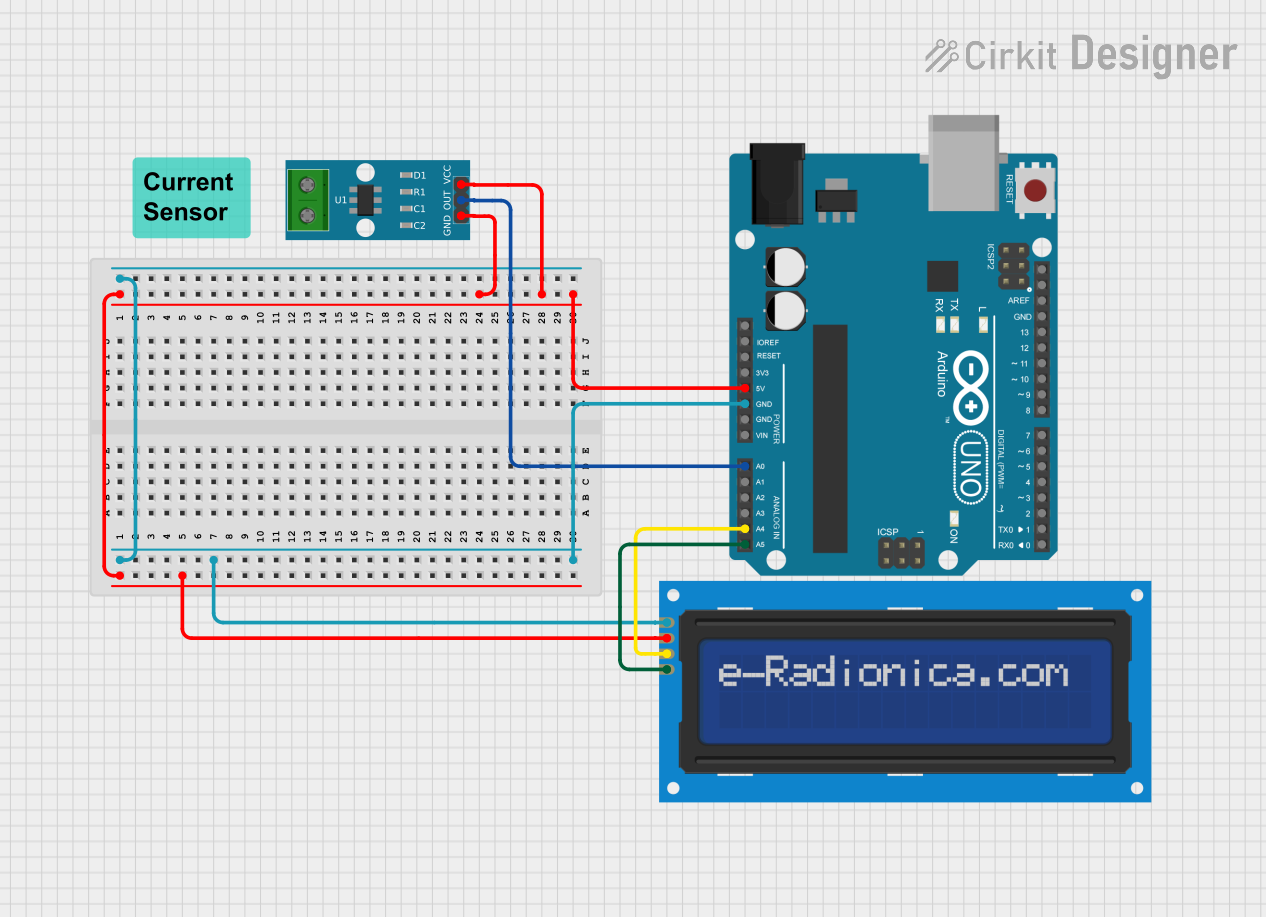
 Open Project in Cirkit Designer
Open Project in Cirkit DesignerExplore Projects Built with SCT-013 Current Sensor

 Open Project in Cirkit Designer
Open Project in Cirkit Designer
 Open Project in Cirkit Designer
Open Project in Cirkit Designer
 Open Project in Cirkit Designer
Open Project in Cirkit Designer
 Open Project in Cirkit Designer
Open Project in Cirkit DesignerCommon Applications
- Energy monitoring in residential, commercial, and industrial settings
- Smart home automation systems
- Power consumption analysis for appliances
- Renewable energy systems (e.g., solar or wind power monitoring)
- Overcurrent detection in electrical systems
Technical Specifications
The SCT-013 current sensor is designed for ease of use and compatibility with microcontrollers like Arduino. Below are its key technical details:
| Parameter | Value |
|---|---|
| Manufacturer | Arduino |
| Part ID | Sen0211 with SCT-013 |
| Measurement Range | 0–100A AC (varies by model) |
| Output Signal | Voltage (proportional to current) |
| Output Voltage Range | 0–1V AC (typical) |
| Core Material | Ferrite |
| Accuracy | ±1% (typical) |
| Operating Temperature | -25°C to +70°C |
| Cable Length | 1 meter |
| Isolation Voltage | 600V AC |
Pin Configuration and Descriptions
The SCT-013 sensor has a 3.5mm audio jack for its output. The pinout of the audio jack is as follows:
| Pin | Description |
|---|---|
| Tip | Signal output (voltage proportional to current) |
| Ring | Not connected (varies by model) |
| Sleeve | Ground |
Usage Instructions
The SCT-013 current sensor is straightforward to use in a circuit. Below are the steps and best practices for integrating it into your project:
Connecting the Sensor
- Clamp the Sensor: Open the clamp and place it around the live or neutral wire of the AC circuit you want to measure. Ensure the wire is fully enclosed within the clamp for accurate readings.
- Connect to a Burden Resistor: The SCT-013 outputs a small AC voltage proportional to the current. To convert this to a measurable voltage for an ADC (Analog-to-Digital Converter), connect a burden resistor across the sensor's output.
- Connect to Microcontroller: Use the 3.5mm audio jack to connect the sensor to your circuit. The signal output (tip) should be connected to the ADC input of your microcontroller, and the ground (sleeve) to the microcontroller's ground.
Example Circuit
Below is a simple circuit diagram for connecting the SCT-013 to an Arduino UNO:
SCT-013 Sensor
|--- Tip (Signal) ----> A0 (Arduino ADC Pin)
|--- Sleeve (Ground) --> GND (Arduino Ground)
Sample Arduino Code
The following Arduino code demonstrates how to read current values from the SCT-013 sensor:
// Include necessary libraries
const int sensorPin = A0; // Analog pin connected to SCT-013 signal output
const float burdenResistor = 100.0; // Burden resistor value in ohms
const float calibrationFactor = 30.0; // Calibration factor for current calculation
void setup() {
Serial.begin(9600); // Initialize serial communication
}
void loop() {
int sensorValue = analogRead(sensorPin); // Read ADC value
float voltage = (sensorValue / 1023.0) * 5.0; // Convert ADC value to voltage
float current = (voltage / burdenResistor) * calibrationFactor;
// Calculate current using calibration factor
Serial.print("Current: ");
Serial.print(current, 2); // Print current value with 2 decimal places
Serial.println(" A"); // Append unit (Amperes)
delay(1000); // Wait for 1 second before next reading
}
Important Considerations
- AC Only: The SCT-013 is designed for AC current measurement and cannot measure DC current.
- Single Conductor: Ensure the sensor clamps around a single conductor (live or neutral), not the entire cable, as this will result in incorrect readings.
- Calibration: The calibration factor may vary depending on the specific model of the SCT-013 and the burden resistor used. Perform a calibration test for accurate results.
- Safety: Always handle the sensor and electrical wiring with care. Ensure the circuit is powered off before clamping the sensor.
Troubleshooting and FAQs
Common Issues and Solutions
No Output Signal
- Cause: The sensor is not clamped around a conductor or the conductor is carrying no current.
- Solution: Ensure the sensor is properly clamped around a live or neutral wire with current flowing through it.
Incorrect Readings
- Cause: The burden resistor value is incorrect or the calibration factor is not set properly.
- Solution: Verify the burden resistor value and adjust the calibration factor in the code.
Fluctuating Readings
- Cause: Electrical noise or loose connections.
- Solution: Use shielded cables and ensure all connections are secure.
Sensor Overheating
- Cause: The sensor is exposed to high temperatures or excessive current.
- Solution: Ensure the sensor is operating within its specified temperature and current range.
FAQs
Q: Can the SCT-013 measure DC current?
A: No, the SCT-013 is designed specifically for AC current measurement.
Q: What is the purpose of the burden resistor?
A: The burden resistor converts the small AC current output of the sensor into a measurable AC voltage.
Q: Can I use the SCT-013 with a Raspberry Pi?
A: Yes, but you will need an external ADC module since the Raspberry Pi does not have built-in analog input pins.
Q: How do I calibrate the sensor?
A: Use a known current source and adjust the calibration factor in your code until the readings match the actual current.
By following this documentation, you can effectively integrate the SCT-013 current sensor into your projects for accurate and reliable AC current measurement.